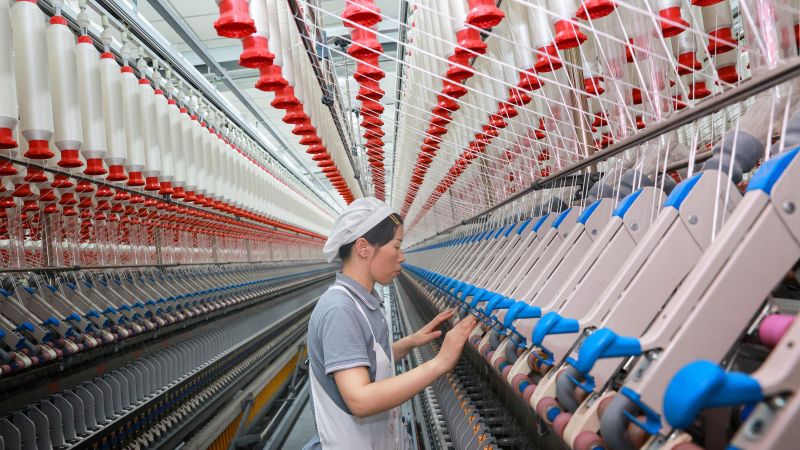China PMI: factory activity contracts unexpectedly in October due to a drop in demand

Hong Kong
CNN
—
China’s massive manufacturing sector has contracted once again amid weak demand, fueling calls for stronger policy support to boost growth.
The official manufacturing Purchasing Managers’ Index (PMI) dropped to 49.5 in October from 50.2 in September, according to China’s National Bureau of Statistics (NBS) on Tuesday. The Reuters polled analysts estimated a 50.2.
The PMI for non-manufacturing includes the services and construction industries, fell to 50.6 this month, the lowest level since China lifted its Covid-19 restrictions in December 2022.
The PMI is an indicator of monthly economic activity. A reading over 50 indicates expansion while anything under that level indicates contraction.
NBS reports that the NBS Manufacturing PMI was negatively affected by the Golden Week holiday in October. The Golden Week holiday lasted from September 29 through October 6. But the contraction also underscores the fragility of the world’s second largest economy.
China’s economy is grappling with mounting challenges, The global economy is experiencing a variety of problems, from a weakening consumer market to an intensifying property crisis.
After March, the manufacturing sector, which represents 28% of GDP, contracted for five months in a row. In September, the manufacturing sector finally began to grow again, boosting hopes that the economy was on its way up.
“The unexpected decline of manufacturing PMI shows the recovery in China is a bumpy road as domestic demand is still quite weak,” said Zhiwei Zhang, president and chief economist for Pinpoint Asset Management.
NBS showed that the number of new factory orders fell in October, indicating a decrease in demand. The employment index also fell, showing that factories hired fewer people.
Nomura analysts believe that the drop in non-manufacturing PMI indicates a rapid decline in pent-up travel and social gathering demand after Golden Week.
Overall, “the weak PMI reinforces the case for stronger fiscal policy support,” Zhang said.
Beijing has intensified its stimulus measures over the past few weeks
China’s top parliamentary body approved a 1 trillion yuan ($137 billion) sovereign bond issue Last week, the government issued a bond to stimulate the economy. The authorities said that the issue was for infrastructure projects in areas affected by disasters.
In addition, nationwide property easing measures have been implemented. In recent weeks, more cities have eased restrictions on homebuying, including Hangzhou, Liuzhou, and others.
Monday, President Xi Jinping opened a meeting on financial policy in Beijing. It was the first such gathering in six years. The goal of the meeting was to identify ways to boost growth and reduce financial risks. This included mounting debts among local governments.
“De-risking local governments will require a combination of proactive fiscal and accommodative monetary policies going forward,” Zhaopeng Xing, senior China strategist for ANZ Research, said in a Tuesday research report.
He expects the People’s Bank of China to cut the reserve requirement ratio — the percentage of deposits that commercial banks must keep as reserves — by 50 basis points in the fourth quarter, which could inject 1.2 trillion yuan ($164 billion) into the financial system.